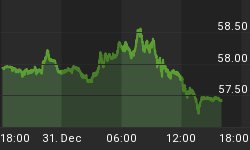Picture this: on a hot Saturday afternoon, a customer walks up to a Robofusion kiosk and orders ice cream. They choose what they want on a touchscreen, and a robotic dispenser serves the frozen treat with toppings and no human worker is in sight. Welcome to the world of service robots.
Pop culture and box office hits such as Terminator and RoboCop have endeared generations to humanoid robots with seemingly otherworldly powers. Service robots–on the other hand–tend to be much less hyped but are rapidly becoming indispensable in retail, hospitality, healthcare, warehouse or fulfillment jobs that are dirty, dull, or dangerous. Indeed, the work happening at the intersection of AI, machine vision, and machine learning is fast becoming the foundation for the next phase of robotics, with roboticists opening a wide range of new possibilities such as robotic harvesting, vision-based drones, robotic sorting in recycling, and warehouse pick and place.
Companies such as Knightscope and Cobalt Robotics are now leasing out security robots. These devices are the size of a person and they travel around corporate offices, equipped with heat sensors, facial detection and employee badge scanners. The robots rove autonomously, watching for signs of trouble, like an unauthorized person entering the building.
Walmart, America’s biggest retailer, uses robots in its stores to clean its floors.
Xenex Corp. has deployed disinfection robots to more than 500 hospitals.
Hospitals in the United States deploys Moxi robots to support nurses.
During the Covid-19 pandemic, South Korea used robots for measuring temperatures & distributing sanitizers.
Meanwhile, MTR Corp., the Hong Kong subway system, uses Vaporized Hydrogen Peroxide (VHP) robots to disinfect rail cars.
The key benefits of service robots include:
- Increased safety
- Superior speed
- Cost savings
- Higher precision
- Greater consistency
Service Robot Market
In 2020, ABI Research forecast that the market for domestic robots would grow at 13% CAGR from 2019 to 2024, and reach volumes of 90.4 million units in 2025. These prosaic robots handle chores such as mowing lawns, cleaning floors, making deliveries in highly structured environments, gathering items from warehouse shelves for dispatch, and assisting with repetitive tasks in process industries. Another type of service robot--the collaborative robot or “cobot”--harnesses mechanical power and human intelligence in a shared working environment, although ensuring safe cooperation remains a serious design challenge.
ABI research estimates that the market for mobile robots, such as the automated guided vehicles used in warehouses, will grow at a brisk 47% CAGR through to reach volumes of 2.4 million units in 2025. Meanwhile shipments of cobots, standing at 15,000 units a year in 2019, are expected to grow 48% a year to hit 171,000 units in 2025.
In monetary terms, Markets and Markets has estimated that the service robotics market will grow from $37.0 billion in 2020 to $102.5 billion by 2025, good for 22.6% CAGR.
Robotic development platform solutions
Modern service robots have been transformed from just performing simple repetitive tasks to doing more complex tasks intelligently by leveraging the power of AI/machine learning (using some of the industry-leading platforms like NVIDIA Jetson), machine vision etc. Some of the key trends in the service robot industry include cloud-connected robots AI integration, robotics development platforms, and emergence of new business models such as Robot-as-a-Service.
Here are some leading robotic development platform solutions that help developers build robotics applications:
AWS RoboMaker
This Amazon platform offers developers a complete cloud-based solution to simulate, test & deploy the robotic applications at scale. Robomaker provides multi-robot simulation, CI/CD integration, machine learning, and seamless integration with AWS’ numerous services. Robomaker comes with sample simulation applications including pre-built scenarios from indoor rooms, retail stores to racing tracks.
Google Cloud Robotics Core
This is an open-source infrastructure platform by Googleparent company Alphabet that helps developers to build robotics solutions. The platform provides access to Google cloud services such as AI/machine learning, logging & monitoring, natural language, vision, and robot-cloud communication that can be used to develop “cloud-connected robots.” Google Cloud Robotics Core deploys Google Cartographer for 2D & 3D real-time simultaneous localization and mapping (SLAM).
Robotic Operating System (ROS)
Microsoft has launched the Robotic Operating System (ROS) for Windows 10 that gives robotics developers a variety of libraries, tools, and rich AI & cloud features to help them program robots more efficiently.

















